Hyundai IONIQ 5 vs DS Automobiles N°8 – Which car suits you better?
Everyday use, family trips or long-distance drives – here’s where the differences show.
Discover whether Hyundai IONIQ 5 or DS Automobiles N°8 fits your lifestyle better.
Here’s where it gets real: The technical differences in detail
Costs and Efficiency: Price and efficiency are often the first things buyers look at. Here it becomes clear which model has the long-term edge – whether at the pump, the plug, or in purchase price.
Hyundai IONIQ 5 has the visibly advantage in terms of price – starting at 38500 £, while the DS Automobiles N°8 starts at 49500 £. That’s a price difference of about 10972 £.
When it comes to electricity consumption, the advantage goes to the Hyundai IONIQ 5: with 15.60 kWh per 100 km, it’s slight more efficient than the DS Automobiles N°8 with 15.70 kWh. That’s roughly 0.10 kWh difference.
In terms of range, the DS Automobiles N°8 performs noticeably better – offering up to 749 km, roughly 179 km more than the Hyundai IONIQ 5.
Engine and Performance: Power, torque and acceleration are the classic benchmarks for car enthusiasts – and here, some clear differences start to show.
When it comes to engine performance, the Hyundai IONIQ 5 clearly takes the lead – with 650 HP compared to 375 HP. That’s a power increase of roughly 275 HP.
In acceleration from 0 to 100 km/h, the Hyundai IONIQ 5 is decisively faster – completing the sprint in 3.50 s, while the DS Automobiles N°8 takes 5.40 s. That makes it around 1.90 s quicker.
In terms of top speed, the Hyundai IONIQ 5 is slightly ahead – reaching 260 km/h, while the DS Automobiles N°8 tops out at 190 km/h. The difference is roughly 70 km/h.
There’s also a difference in torque: the Hyundai IONIQ 5 pulls distinctly stronger, offering 770 Nm compared to 509 Nm. That’s about 261 Nm difference.
Space and Everyday Use: Whether family car or daily driver – which one offers more room, flexibility and comfort?
Both vehicles offer enough space for 5 passengers.
The Hyundai IONIQ 5 is slightly lighter – 1955 kg compared to 2132 kg. The weight difference is around 177 kg.
In trunk capacity, the DS Automobiles N°8 takes the lead – 621 L compared to 520 L. That’s around 101 L difference.
In maximum load capacity, Hyundai IONIQ 5 wins – up to 1580 L, about 27 L more than the DS Automobiles N°8.
Payload capacity also favors the Hyundai IONIQ 5 minimal – 530 kg compared to 520 kg. The difference is roughly 10 kg.
Our verdict: The Hyundai IONIQ 5 outperforms the competitor in nearly every area and therefore earns the title of our DriveDuel Champion!
Hyundai IONIQ 5 is the better all-rounder in this comparison.
Hyundai IONIQ 5
The Hyundai IONIQ 5 showcases a bold and futuristic design that captures attention with its striking facade and sharp lines. This electric vehicle offers an impressive blend of performance and efficiency, making it a compelling choice for environmentally conscious drivers. Inside, the spacious and tech-forward interior provides a comfortable and engaging driving experience for both driver and passengers.
details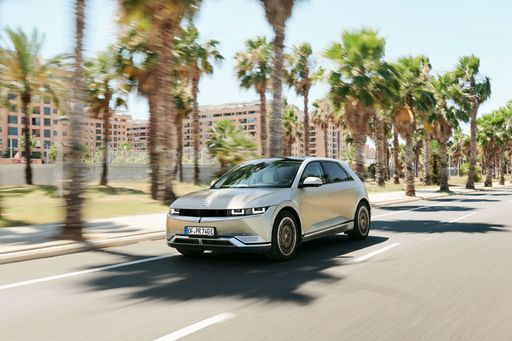 @ hyundai.news
@ hyundai.news
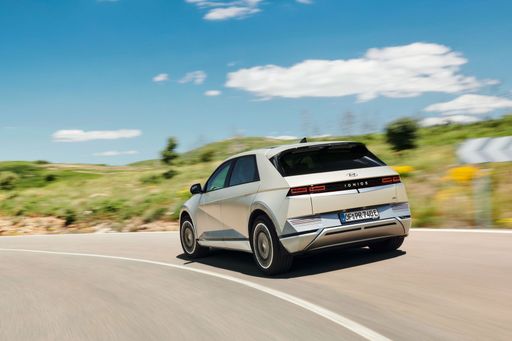 @ hyundai.news
@ hyundai.news
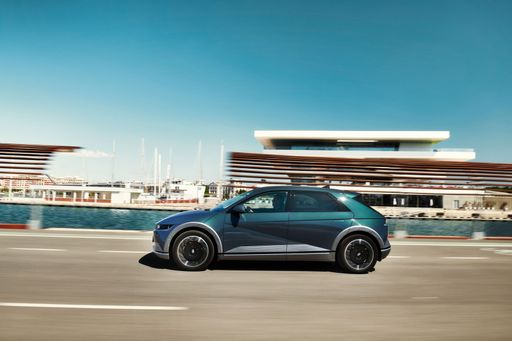 @ hyundai.news
@ hyundai.news
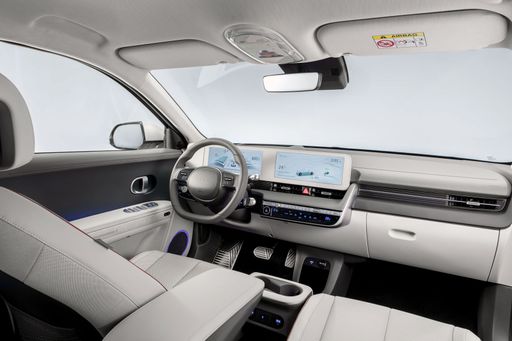 @ hyundai.news
@ hyundai.news
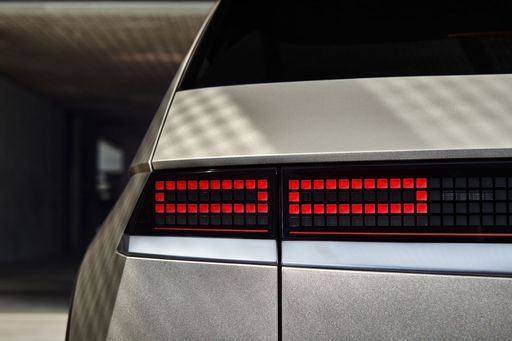 @ hyundai.news
@ hyundai.news
DS Automobiles N°8
The N°8 captivates automotive enthusiasts with its striking design and dynamic presence on the road. This model effortlessly combines luxury and performance, making it a standout choice for those seeking a thrilling driving experience. With an interior that prioritizes comfort and cutting-edge technology, the N°8 truly redefines what it means to drive in style.
details

|
|
|
|
|
Costs and Consumption |
|
|---|---|
|
Price
38500 - 64200 £
|
Price
49500 - 69400 £
|
|
Consumption L/100km
-
|
Consumption L/100km
-
|
|
Consumption kWh/100km
15.6 - 21.2 kWh
|
Consumption kWh/100km
15.7 - 17.4 kWh
|
|
Electric Range
440 - 570 km
|
Electric Range
550 - 749 km
|
|
Battery Capacity
63 - 84 kWh
|
Battery Capacity
73.7 - 97.2 kWh
|
|
co2
0 g/km
|
co2
0 g/km
|
|
Fuel tank capacity
-
|
Fuel tank capacity
-
|
Dimensions and Body |
|
|---|---|
|
Body Type
SUV
|
Body Type
SUV
|
|
Seats
5
|
Seats
5
|
|
Doors
5
|
Doors
5
|
|
Curb weight
1955 - 2275 kg
|
Curb weight
2132 - 2289 kg
|
|
Trunk capacity
480 - 520 L
|
Trunk capacity
566 - 621 L
|
|
Length
4655 - 4715 mm
|
Length
4820 mm
|
|
Width
1890 - 1940 mm
|
Width
1920 mm
|
|
Height
1585 - 1605 mm
|
Height
1580 mm
|
|
Max trunk capacity
1540 - 1580 L
|
Max trunk capacity
1498 - 1553 L
|
|
Payload
385 - 530 kg
|
Payload
508 - 520 kg
|
Engine and Performance |
|
|---|---|
|
Engine Type
Electric
|
Engine Type
Electric
|
|
Transmission
Automatic
|
Transmission
Automatic
|
|
Transmission Detail
Reduction Gearbox
|
Transmission Detail
Reduction Gearbox
|
|
Drive Type
Rear-Wheel Drive, All-Wheel Drive
|
Drive Type
Front-Wheel Drive, All-Wheel Drive
|
|
Power HP
170 - 650 HP
|
Power HP
258 - 375 HP
|
|
Acceleration 0-100km/h
3.5 - 8.5 s
|
Acceleration 0-100km/h
5.4 - 7.8 s
|
|
Max Speed
185 - 260 km/h
|
Max Speed
190 km/h
|
|
Torque
350 - 770 Nm
|
Torque
343 - 509 Nm
|
|
Number of Cylinders
-
|
Number of Cylinders
-
|
|
Power kW
125 - 478 kW
|
Power kW
190 - 276 kW
|
|
Engine capacity
-
|
Engine capacity
-
|
General |
|
|---|---|
|
Model Year
2024
|
Model Year
2025
|
|
CO2 Efficiency Class
A
|
CO2 Efficiency Class
A
|
|
Brand
Hyundai
|
Brand
DS Automobiles
|
What drive types are available for the Hyundai IONIQ 5?
The Hyundai IONIQ 5 is available as Rear-Wheel Drive or All-Wheel Drive.
The prices and data displayed are estimates based on German list prices and may vary by country. This information is not legally binding.
